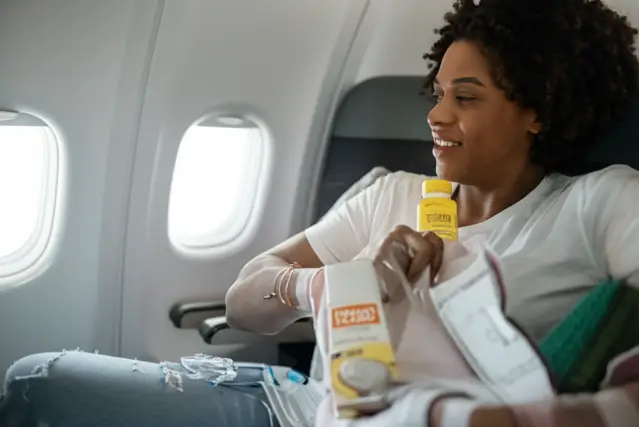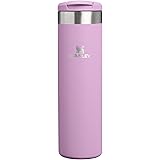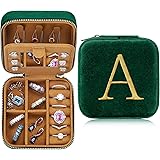Traveling can be stressful enough without having to worry about whether you can bring your essential medications. Headaches, minor aches, and fever can strike at any time, making Tylenol (acetaminophen) a travel essential for many. But can you bring Tylenol on a plane? The short answer is generally yes, but there are nuances to understand to ensure a smooth journey through airport security.
This comprehensive guide will cover everything you need to know about traveling with Tylenol, from TSA regulations to helpful travel tips, updated for 2024.
Table of Contents
Understanding TSA Regulations for Medications
The Transportation Security Administration (TSA) has specific guidelines regarding medications in carry-on and checked baggage. These guidelines are designed to ensure safety and security without unduly inconveniencing travelers who need medication. Let’s break down the key aspects:
General Rules for Medications
According to the TSA, you can bring both prescription and over-the-counter (OTC) medications, including Tylenol, in your carry-on and checked baggage. There are no specific restrictions on the quantity of pills you can carry, as long as they are for personal use. However, liquid medications have additional considerations. It is advisable to always check the most current and up-to-date rules on the TSA official website before travelling.
Liquid Tylenol and the 3-1-1 Rule
Liquid medications, including liquid Tylenol, are subject to the TSA’s 3-1-1 rule for carry-on baggage. This rule states that you can bring liquids in containers no larger than 3.4 ounces (100 milliliters) in a single, quart-sized, clear plastic zip-top bag. Each passenger is limited to one such bag. If your liquid Tylenol exceeds this limit, it should be placed in your checked baggage or be accompanied by the proper documentation.
However, there is an exception for medically necessary liquids. If you need to carry liquid Tylenol in a larger quantity than permitted by the 3-1-1 rule, you must declare it to TSA officers at the security checkpoint. It is often recommended to have a prescription or doctor’s note to support the medical necessity of the larger quantity. This doesn’t guarantee it will be allowed, but it significantly increases the chances of a smooth security process.

travel medicine
Documentation and Identification
While not always mandatory, having documentation for your medication can be beneficial, especially if you’re carrying a large quantity or if the medication is not clearly identifiable. This documentation can include:
- A prescription or a copy of the prescription
- A doctor’s note stating the medical necessity of the medication
- The original packaging with the prescription label
Having these documents can help TSA officers quickly verify the legitimacy of your medication and avoid unnecessary delays. For children’s liquid medication, carrying the original packaging with the dosage instructions is highly recommended.
Medication Storage and Packaging
Proper storage and packaging of your medication can also contribute to a hassle-free travel experience. Consider these tips:
- Keep your medications in their original containers with the prescription label clearly visible.
- Use a pill organizer to manage multiple medications, but ensure you have documentation (like a prescription) for all the pills.
- Protect liquid medications from leakage by sealing them tightly and placing them in a waterproof bag.
Tylenol in Different Forms: Pills, Liquids, and More
Tylenol comes in various forms, each with its own considerations for air travel. Let’s examine the most common forms:
Tylenol Pills and Tablets
Tylenol pills and tablets are the easiest to travel with. Since they are not liquids, they are not subject to the 3-1-1 rule. You can bring as many pills as you need for personal use in your carry-on or checked baggage. It’s still advisable to keep them in their original container or have a prescription available, especially for international travel.
Liquid Tylenol (for Adults and Children)
Liquid Tylenol presents a slightly greater challenge due to the 3-1-1 rule. For carry-on baggage, ensure that the bottle is 3.4 ounces (100 ml) or smaller and placed in a clear, quart-sized bag. If you need to carry a larger quantity, you must declare it to TSA and provide documentation. For checked baggage, there are no restrictions on the quantity of liquid Tylenol you can bring.
Tylenol Suppositories
Tylenol suppositories are less common but still available. They are not subject to the 3-1-1 rule as they are not liquids. However, it’s a good idea to keep them in their original packaging and be prepared to explain their purpose to TSA officers if asked.
Tylenol Gelcaps
Tylenol gelcaps are treated similarly to pills and tablets. There are no restrictions on the quantity you can bring in your carry-on or checked baggage. Keep them in their original packaging or a pill organizer.
Tylenol Powders
Tylenol powders, such as those designed to be dissolved in water, are also allowed. The TSA doesn’t have specific restrictions on powder medications, but be aware of general guidelines for powders. If you’re carrying a large quantity of powder (over 12 oz/350 ml), it might be subject to additional screening. Keep them in their original, sealed packaging to avoid suspicion.
Specific Scenarios and Examples
To better illustrate how these rules apply in real-world situations, let’s consider a few common scenarios:
Scenario 1: Traveling with a Baby or Young Child
Sarah is traveling with her 18-month-old son, who is prone to fevers. She needs to bring liquid Tylenol for children in case he gets sick during the flight. Since she needs more than 3.4 ounces, she brings a full-size bottle of liquid Tylenol and a doctor’s note stating her son’s medical need for it. She declares the medication to the TSA officer at the security checkpoint. After a brief inspection, the TSA officer allows her to proceed with the liquid Tylenol.
Key takeaway: Declare medically necessary liquids and have documentation ready.
Scenario 2: Traveling with a Large Family
The Thompson family, consisting of two adults and three children, is going on a two-week vacation. They want to bring enough Tylenol for everyone in case of headaches or minor aches. They pack a large bottle of Tylenol pills in their checked baggage and each adult carries a small bottle of Tylenol pills in their carry-on. They also pack individual, travel-sized liquid Tylenol for the kids in their respective quart-sized bags.
Key takeaway: Distributing medications among family members can help comply with carry-on liquid restrictions.
Scenario 3: International Travel with Tylenol
David is traveling to Europe for a business trip and needs to bring his regular dose of Tylenol for occasional headaches. He keeps the Tylenol pills in their original container with the label clearly visible. He also carries a copy of his prescription, just in case. Upon arrival in Europe, he has no issues with customs as he has taken precautions.
Key takeaway: For international travel, keeping medications in their original containers and having a prescription can prevent potential issues.
TSA’s Official Stance on Medications (2024 Update)
The TSA’s official website is the best resource for the most up-to-date information. As of 2024, their guidelines for medications remain largely consistent with previous years. Key points to remember:
- Medications in pill or solid form are allowed in unlimited quantities in both carry-on and checked baggage.
- Liquid medications are subject to the 3-1-1 rule in carry-on baggage unless they are medically necessary in larger quantities.
- It is not required to have medications in their original containers, but it is highly recommended, especially for international travel.
- TSA officers have the final say on what is allowed through security. Be polite and cooperative, and provide any documentation requested.
- Always check the TSA website or contact TSA customer support for the latest information before your travel date.
Tips for a Smooth TSA Experience with Medications
Navigating airport security with medications can be simplified by following these helpful tips:
1. Be Prepared
Before you even pack your bags, research the TSA guidelines for medications. Understand the 3-1-1 rule for liquids and gather any necessary documentation, such as prescriptions or doctor’s notes. Knowing the rules in advance can reduce anxiety and ensure a smoother packing experience.
2. Pack Strategically
Pack your medications in an easily accessible location in your carry-on bag. This allows you to quickly retrieve them if asked by a TSA officer. A clear, resealable bag is ideal for keeping liquid medications separate from other items.
3. Declare Medically Necessary Liquids
If you need to carry liquid Tylenol in a quantity larger than 3.4 ounces (100 ml), declare it to the TSA officer at the security checkpoint. Be prepared to show your prescription or doctor’s note. Explain why you need the larger quantity of medication, and be patient and cooperative during the inspection process.
4. Keep Medications in Original Containers
Whenever possible, keep your medications in their original containers with the prescription label clearly visible. This helps TSA officers easily identify the medication and verify its legitimacy. If you use a pill organizer, consider taking a photo of your prescription or keeping a list of all the medications with their dosages.
5. Allow Extra Time
Security screenings can sometimes take longer when you’re carrying medications. Arrive at the airport with plenty of time to spare so you don’t feel rushed or stressed. This allows you to calmly and politely address any questions or concerns raised by TSA officers.
6. Be Polite and Cooperative
Approach the security checkpoint with a positive attitude and be cooperative with TSA officers. Answer their questions honestly and follow their instructions. Remember that they are just doing their job to ensure the safety of all travelers. A little politeness can go a long way in resolving any potential issues quickly.
7. Know Your Rights
While it’s important to be cooperative, it’s also essential to know your rights as a traveler. You have the right to request a private screening if you prefer not to discuss your medical condition in public. You also have the right to speak to a supervisor if you feel you are being treated unfairly.
8. Consider Travel Insurance
Travel insurance can provide coverage for unexpected medical expenses, including the cost of replacing lost or stolen medications. It can also offer assistance in finding a doctor or pharmacy in a foreign country. Consider purchasing travel insurance that specifically covers your medical needs for added peace of mind.
9. Research Destination Country Regulations
If you’re traveling internationally, research the regulations for bringing medications into your destination country. Some countries have strict rules about certain medications, and you may need to obtain special permission or documentation before you travel. Failure to comply with these regulations could result in your medication being confiscated or even legal penalties.
10. Digitalize Your Prescriptions
Keep a digital copy of your prescriptions on your phone or in a secure cloud storage. This makes it easier to access in case you lose the physical copy or need to refill while travelling. Many pharmacies now offer digital prescriptions as well, making it easier to manage your medications on the go.
Navigating International Travel with Tylenol
International travel introduces an additional layer of complexity when it comes to medications. Here’s what you need to know:
Research Destination Country Laws
Before traveling, research the laws and regulations of your destination country regarding medications. Some countries have restrictions on certain medications that are freely available in the United States. For example, some countries may require a special import permit for certain prescription drugs. The regulations vary from country to country.
Carry a Doctor’s Letter
Obtain a letter from your doctor stating your medical condition and the necessity of your medication. This letter should include the generic name of the medication, the dosage, and the frequency of use. Have the letter translated into the language of your destination country if possible. It’s also a good idea to have your doctor include a statement that the medication is for personal use only.
Keep Medications in Original Packaging
Always keep your medications in their original packaging with the prescription label clearly visible. This helps customs officials easily identify the medication and verify its legitimacy. If you use a pill organizer, consider bringing a copy of your prescription or a list of all the medications with their dosages.
Declare Medications at Customs
When you arrive at your destination country, declare your medications to customs officials. Be prepared to show your prescription, doctor’s letter, and the original packaging of your medications. Answer their questions honestly and follow their instructions.
Consider Travel Insurance
Travel insurance can provide coverage for unexpected medical expenses, including the cost of replacing lost or stolen medications. It can also offer assistance in finding a doctor or pharmacy in a foreign country. Consider purchasing travel insurance that specifically covers your medical needs for added peace of mind.
Medication Restrictions in Common Destinations
Here is a quick rundown of potential medication-related rules in popular destinations (note: always verify this information with official sources before travel as regulations can change):
- Europe (EU): Generally allows personal supplies of medication with a doctor’s prescription. Be aware that some medications readily available in the US might be restricted.
- Canada: Similar to the US, personal use quantities are generally allowed. Keep medications labelled.
- Mexico: Generally allows prescription and OTC medications for personal use but double-check any specific restrictions.
- Japan: Can have very strict rules about certain medications (even common ones in the US). Check specific medication restrictions before travelling. A *Yakkan Shoumei* (import certificate) may be required for some medications if you are carrying more than a month’s supply.
- Australia: Requires prescriptions to be available for inspection if you are carrying restricted medication. Check the specific medication restrictions for the country.
Common Mistakes to Avoid
Many travelers encounter issues with their medications at airport security due to simple mistakes. Here are some common pitfalls to avoid:
1. Not Knowing the Rules
One of the biggest mistakes is simply not being aware of the TSA’s guidelines for medications. Before you travel, take the time to research the rules and understand what is allowed and what is not. This simple step can save you a lot of time and frustration at the airport.
2. Overlooking the 3-1-1 Rule
The 3-1-1 rule for liquids is a common source of confusion. Many travelers mistakenly believe that they can bring any quantity of liquid medication in their carry-on baggage. Remember that liquids must be in containers of 3.4 ounces (100 ml) or smaller and placed in a clear, quart-sized bag, unless they are medically necessary in larger quantities.
3. Forgetting Documentation
Failing to bring the necessary documentation, such as a prescription or doctor’s note, can cause delays and complications. If you need to carry liquid Tylenol in a quantity larger than permitted by the 3-1-1 rule, be sure to have documentation to support the medical necessity of the medication.
4. Not Declaring Medically Necessary Liquids
If you are carrying liquid Tylenol in a quantity larger than 3.4 ounces (100 ml), you must declare it to the TSA officer at the security checkpoint. Trying to sneak it through without declaring it can lead to confiscation of the medication and potential legal consequences.
5. Assuming the Rules are the Same Everywhere
Don’t assume that the rules for medications are the same in every country. Some countries have stricter regulations than others, and you may need to obtain special permission or documentation before you travel. Research the regulations of your destination country before you pack your bags.
6. Not Packing Strategically
Failing to pack your medications in an easily accessible location in your carry-on bag can cause delays at the security checkpoint. Pack your medications in a clear, resealable bag so you can quickly retrieve them if asked by a TSA officer.
7. Being Uncooperative with TSA Officers
Being rude or uncooperative with TSA officers can make the security screening process more difficult. Approach the security checkpoint with a positive attitude and be cooperative with TSA officers. Answer their questions honestly and follow their instructions.
8. Mixing Medications in Unlabelled Containers
Putting different medications in unlabelled containers can raise suspicion and make it difficult for TSA to identify them. Always keep medications in their original containers, or if using a pill organizer, be prepared to identify each medication.
9. Ignoring Expiration Dates
Carrying expired medications might raise questions from TSA officials or customs agents. While it’s generally not illegal, it’s best to ensure medications are still within their expiry dates for optimal effectiveness and to avoid unnecessary scrutiny.
10. Not Having a Backup Plan
If your medication is lost, stolen, or confiscated, it’s important to have a backup plan. Make sure you have a copy of your prescription and know how to contact a doctor or pharmacy in your destination country.
Dealing with Potential Issues at Airport Security
Even with careful preparation, you may still encounter issues with your medications at airport security. Here’s how to handle common problems:
1. Medication Questioned by TSA Officer
If a TSA officer questions your medication, remain calm and polite. Explain the purpose of the medication and provide any documentation you have, such as a prescription or doctor’s note. Answer their questions honestly and follow their instructions. If you feel you are being treated unfairly, ask to speak to a supervisor.
2. Liquid Medication Exceeds 3.4 Ounce Limit
If you are carrying liquid Tylenol in a quantity larger than 3.4 ounces (100 ml) and you don’t have a prescription or doctor’s note, the TSA officer may ask you to dispose of the excess liquid. You can either transfer the liquid to a smaller container that meets the 3-1-1 rule or place the medication in your checked baggage if you have time. If you have a prescription or doctor’s note, present it to the TSA officer and explain why you need the larger quantity of medication. If they still refuse to allow it, ask to speak to a supervisor.
3. Medication Confiscated
If your medication is confiscated by a TSA officer or customs official, ask for a written receipt and a clear explanation of why the medication was confiscated. Keep the receipt and any other documentation related to the incident. You may be able to appeal the decision or seek reimbursement for the cost of the medication.
4. Running Out of Medication During Travel
If you run out of Tylenol during your trip, you can purchase more at a local pharmacy. However, be aware that the availability and brand names of medications may vary from country to country. If you need a prescription to obtain Tylenol, contact a local doctor or pharmacy and ask for assistance. ***_Online consultation might also be an option_***.
5. Lost or Stolen Medication
If your Tylenol is lost or stolen during your trip, report the incident to the local police and obtain a copy of the police report. Contact your travel insurance provider and file a claim for the cost of replacing the medication. You may also need to contact a local doctor or pharmacy to obtain a new prescription.
Alternative Pain Relief Options for Travel
If you’re concerned about traveling with Tylenol, there are alternative pain relief options you can consider:
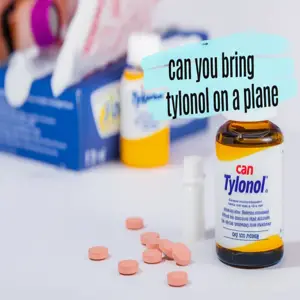
pain relief
1. Natural Remedies
For mild pain relief, consider natural remedies such as:
- Ginger: Known for its anti-inflammatory properties
- Turmeric: Contains curcumin, which has pain-relieving effects
- Peppermint oil: Can help relieve headaches and muscle pain
- Essential oils: Lavender and chamomile can promote relaxation and reduce stress
2. Non-Medication Pain Relief Techniques
Other non-medication techniques can also provide pain relief:
- Stretching: Can relieve muscle tension and improve circulation
- Massage: Can reduce muscle pain and promote relaxation
- Heat or cold therapy: Applying heat or cold packs can help reduce pain and inflammation
- Meditation and deep breathing: Can help manage pain by reducing stress and promoting relaxation
3. Alternative Over-the-Counter Pain Relievers
Consider other over-the-counter pain relievers:
- Ibuprofen (Advil, Motrin): An NSAID that can reduce pain and inflammation
- Naproxen (Aleve): Another NSAID with a longer-lasting effect
- Aspirin: Can relieve pain and reduce fever
Always consult with your doctor or pharmacist before using any new medication or alternative therapy.
Tylenol Dosage and Safety Considerations
While Tylenol is generally safe when used as directed, it’s important to follow dosage guidelines and be aware of potential side effects:
Adult Dosage
The recommended adult dosage of Tylenol is typically 325-650 mg every 4-6 hours as needed, not to exceed 4,000 mg in 24 hours. Extended-release Tylenol should be taken as 650 mg every 8 hours as needed, not to exceed 3,900 mg in 24 hours.
Children’s Dosage
The dosage of Tylenol for children depends on their weight and age. Always follow the instructions on the product label or consult with your doctor or pharmacist. Do not exceed the recommended dosage.
Potential Side Effects
Common side effects of Tylenol include nausea, stomach pain, and loss of appetite. Serious side effects are rare but can include liver damage, allergic reactions, and skin reactions. If you experience any unusual symptoms, stop taking Tylenol and seek medical attention.
Drug Interactions
Tylenol can interact with certain medications, including blood thinners, alcohol, and other pain relievers. Consult with your doctor or pharmacist before taking Tylenol if you are taking any other medications.
Overdose
Taking too much Tylenol can cause liver damage and other serious health problems. Symptoms of Tylenol overdose include nausea, vomiting, abdominal pain, and jaundice. If you suspect a Tylenol overdose, seek immediate medical attention.
The Future of Travel and Medication Regulations
Travel regulations are constantly evolving, and it’s important to stay informed about the latest changes. Here are some trends and predictions for the future of travel and medication regulations:
1. Increased Security Measures
In response to evolving security threats, airports are likely to implement even stricter security measures in the future. This could include enhanced screening technologies, more thorough inspections of baggage, and stricter enforcement of medication regulations. Biometric identification might be more common, potentially easing some processes if integrated well with medication tracking.
2. Digital Health Records
The adoption of digital health records could streamline the process of verifying prescriptions and medical necessity. Travelers could potentially access their medical records on their smartphones and share them with TSA officers or customs officials. This would reduce the need for paper prescriptions and doctor’s notes and make it easier to manage medications while traveling. Explore digital health passport options that might work for you.
3. Personalized Travel Assistance
AI-powered travel apps and services could provide personalized assistance to travelers with medical needs. These apps could offer real-time information about medication regulations, help travelers find local pharmacies and doctors, and even assist with obtaining necessary documentation.
4. Harmonization of International Regulations
Efforts to harmonize international medication regulations could make it easier for travelers to bring their medications across borders. This would involve developing common standards for prescription verification, medication labeling, and import permits. Organizations like the World Health Organization (WHO) could play a crucial role.
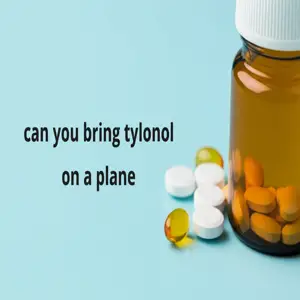
carry-on essentials
5. Increased Focus on Mental Health
As awareness of mental health issues grows, there may be increased attention to the needs of travelers with mental health conditions. This could include making it easier to travel with psychiatric medications and providing support services for travelers experiencing anxiety or panic attacks. Airports may need to adapt their facilities to accommodate travellers with sensory sensitivities.
Table: Tylenol Travel Checklist
| Item | Carry-On | Checked Baggage | Notes |
|---|---|---|---|
| Tylenol Pills/Tablets | Yes, unlimited quantity for personal use. | Yes, unlimited quantity for personal use. | Keep in original container if possible. |
| Liquid Tylenol (≤ 3.4 oz/100 ml) | Yes, in a quart-sized bag. | Yes, unlimited quantity. | Ensure container is sealed tightly. |
| Liquid Tylenol (> 3.4 oz/100 ml) | Yes, if medically necessary. Declare to TSA. | Yes, unlimited quantity. | Doctor’s note or prescription recommended for carry-on. |
| Prescription/Doctor’s Note | Recommended for liquid Tylenol > 3.4 oz. | Recommended for international travel. | Digital copy acceptable. |
| Original Packaging | Recommended for all forms of Tylenol. | Recommended for international travel. | Helps with identification. |
| Travel Insurance | Optional. | Optional. | Consider for coverage of lost/stolen medication. |
FAQ: Frequently Asked Questions About Bringing Tylenol on a Plane
Can I bring Tylenol on a plane in my carry-on baggage?
Yes, you can bring Tylenol in your carry-on baggage. Tylenol pills, tablets, and gelcaps are allowed in unlimited quantities for personal use. Liquid Tylenol is subject to the 3-1-1 rule, meaning each container must be 3.4 ounces (100 ml) or smaller and placed in a clear, quart-sized bag. If you need to bring a larger quantity of liquid Tylenol for medical reasons, you must declare it to the TSA officer at the security checkpoint.
Can I bring Tylenol on a plane in my checked baggage?
Yes, you can bring Tylenol in your checked baggage. There are no restrictions on the quantity of Tylenol you can bring in your checked baggage, whether it’s in pill, tablet, gelcap, or liquid form.
Do I need a prescription to bring Tylenol on a plane?
No, you do not need a prescription to bring Tylenol on a plane, as it is an over-the-counter medication. However, it’s recommended to have a prescription or doctor’s note if you need to carry liquid Tylenol in a quantity larger than 3.4 ounces (100 ml) in your carry-on baggage. A prescription can also be helpful for international travel to avoid any issues with customs.
What is the TSA’s 3-1-1 rule for liquids?
The TSA’s 3-1-1 rule for liquids states that you can bring liquids in containers no larger than 3.4 ounces (100 milliliters) in your carry-on baggage. All containers must fit in a single, quart-sized, clear plastic zip-top bag. Each passenger is limited to one such bag. This rule applies to liquid medications, including liquid Tylenol, unless they are medically necessary in larger quantities.
Can I bring liquid Tylenol for my baby on a plane?
Yes, you can bring liquid Tylenol for your baby on a plane. If you need to bring more than 3.4 ounces (100 ml) in your carry-on baggage, declare it to the TSA officer at the security checkpoint. It’s recommended to have a doctor’s note or prescription to support the medical necessity of the medication. Be prepared to answer questions about the medication and demonstrate its use if asked.
What should I do if the TSA officer questions my Tylenol?
If a TSA officer questions your Tylenol, remain calm and polite. Explain that it is an over-the-counter pain reliever and provide any documentation you have, such as a prescription or doctor’s note. Answer their questions honestly and follow their instructions. If you feel you are being treated unfairly, ask to speak to a supervisor.
Can I use a pill organizer to bring Tylenol on a plane?
Yes, you can use a pill organizer to bring Tylenol on a plane. However, it’s recommended to keep the Tylenol in its original container with the label clearly visible if possible. If you use a pill organizer, consider bringing a copy of your prescription or a list of all the medications in the organizer with their dosages. This can help avoid any confusion or questions at the security checkpoint.
Are there any restrictions on the type of Tylenol I can bring on a plane?
No, there are no specific restrictions on the type of Tylenol you can bring on a plane. You can bring Tylenol pills, tablets, gelcaps, liquids, suppositories, and powders, as long as you follow the TSA’s guidelines for medications. Liquid Tylenol is subject to the 3-1-1 rule in carry-on baggage, while there are no restrictions on the quantity you can bring in your checked baggage.
What if I forget my Tylenol and need it during my flight?
If you forget your Tylenol and need it during your flight, ask a flight attendant if they have any pain relievers on board. Some airlines carry basic over-the-counter medications for passengers. Alternatively, you can purchase Tylenol at the airport pharmacy in your destination city or at a local pharmacy once you arrive at your destination.
How can I find up-to-date information on TSA medication regulations?
The best way to find up-to-date information on TSA medication regulations is to visit the TSA’s official website. The TSA website provides detailed information about what you can bring on a plane, including medications. You can also contact TSA customer support by phone or email to ask specific questions about your situation. Always check the TSA website or contact TSA customer support before your travel date to ensure you have the latest information. Contacting TSA PreCheck might be helpful if you are eligible.
Conclusion: Final Thoughts on Traveling with Tylenol
Traveling with Tylenol doesn’t have to be a headache, provided you’re prepared and informed. The key takeaways are understanding the TSA’s 3-1-1 rule for liquids, carrying necessary documentation when applicable, and packing strategically. Remember that while TSA guidelines offer a framework, individual TSA officers have the final say at the security checkpoint. Being polite, cooperative, and knowing your rights can significantly ease the process.
As travel regulations continue to evolve, staying updated is crucial. Regularly check the TSA website and be mindful of any specific rules in your destination country. Consider alternatives like digital health records and personalized travel assistance as they become more widespread. By planning carefully and being knowledgeable, you can ensure your essential pain relief is readily available throughout your journey, allowing you to focus on enjoying your travel experience.
Ultimately, your comfort and well-being are paramount when traveling. Having access to medications like Tylenol can help manage minor aches, pains, and fevers, making your trip more enjoyable. By following these guidelines, you can confidently bring Tylenol on a plane and have a smoother, more stress-free travel experience in 2024 and beyond.

